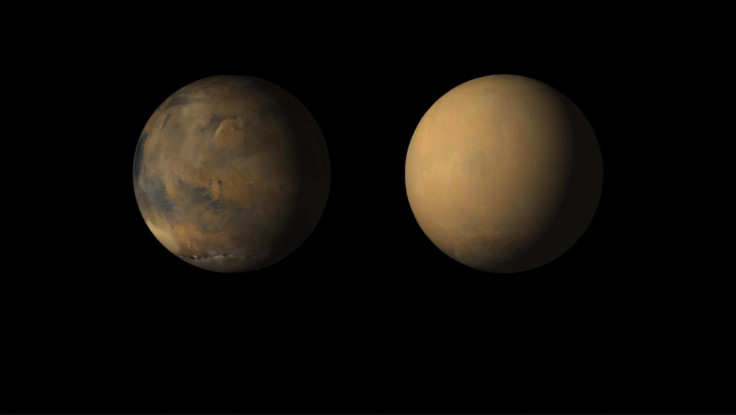Martian Storms Launching 'Space Elevators' Could Explain How Mars Lost Its Water

It is normal for dust storms to form on Mars. However, every now and then, runaway storms break out and cover the entire planet in dust. In fact, in 2018, a massive global dust storm led to the end of the Opportunity rover when the darkness covered the rover ’s solar panels.
Dust Towers
In two recent studies, researchers shed light on a phenomenon that appears to happen during massive dust storms. Evidently, these events, dense towers of concentrated dust rise high into the air, much higher than normal background dust. Such dust towers begin on the surface as an area of lifted dust the size of Rhode Island. By the time its height is 50 miles (80 km), the tower can be as wide as Nevada.
Compared to dust towers during normal events when the dust would fall back down in a day or two, during global dust storms, the towers can renew continuously for up to 3 1/2 weeks. Further, while these dust towers can occur in Mars under normal conditions, they occur in greater numbers during massive dust storms.
How Mars Lost Its Water
According to the researchers, the dust towers carry dust-trapped water vapors into space where the solar radiation breaks their molecules apart. As such, it is possible that the so-called “space elevators” could explain how Mars ended up losing its water over billions of years.
Interestingly, this is not the first time that scientists hypothesized that dust storms had something to do with how Mars lost its liquid water. Earlier in the year, scientists who observed the 2018 dust storm examined how water could have behaved during the storm and concluded that the dust storms caused the gases to escape into space.
In another study, NASA and European Space Agency (ESA) researchers were able to measure water molecules before and after the massive dust storm, and found that powerful dust storms pushed the water vapor to higher altitudes where it is broken down by solar radiation and its elements are left drifting in space.
Naturally, these are merely hypotheses about how Mars lost its water, but the studies provide significant clues as to how Mars really turned into a freezing desert.
Today, water on Mars exists in the form of vapor or ice and part of NASA's 2020 Mars mission is to look into a particular lake on Mars, partly in search of signs of life.
© Copyright IBTimes 2024. All rights reserved.






















